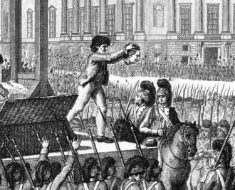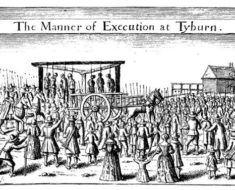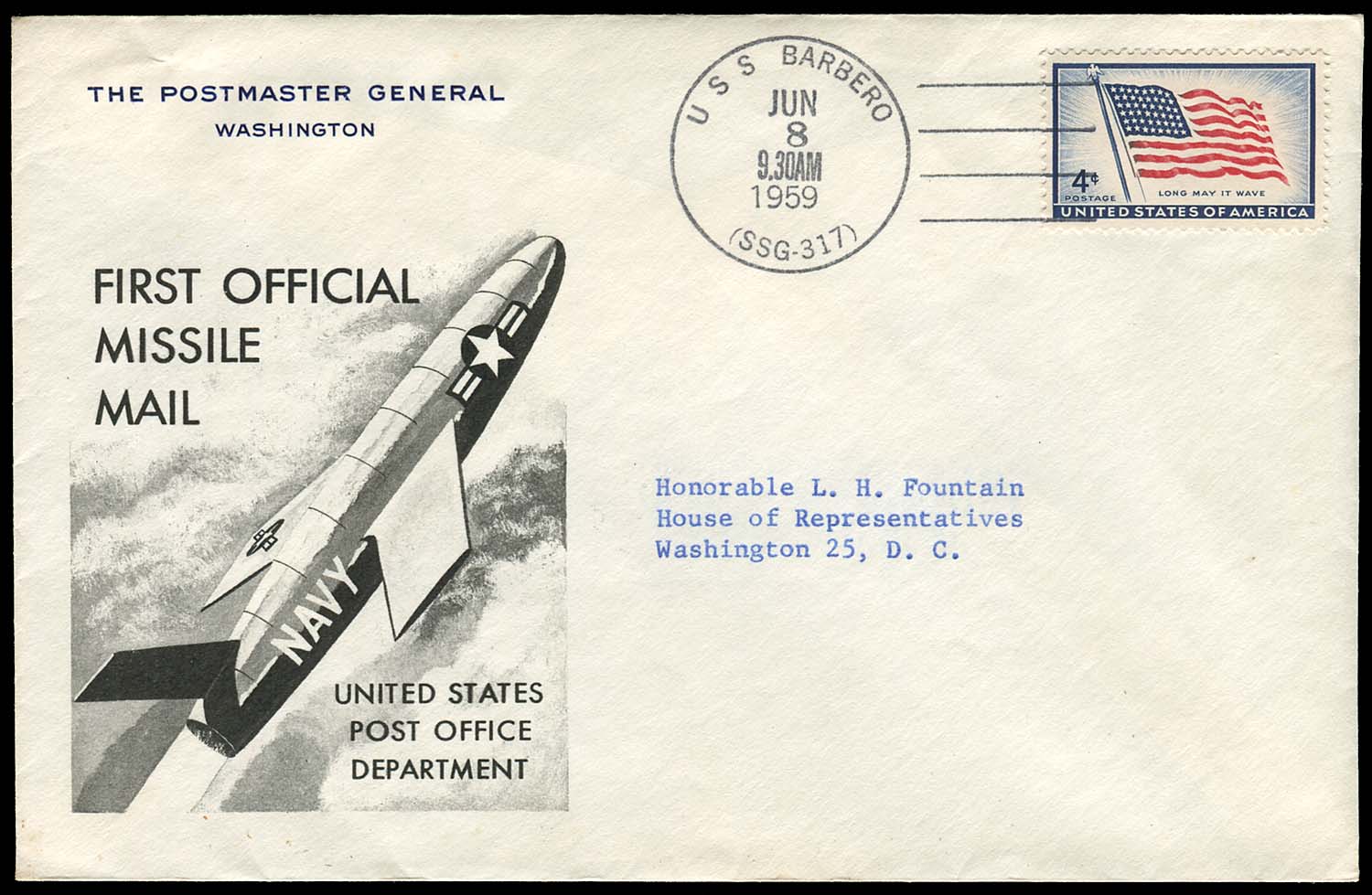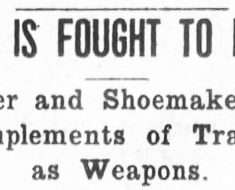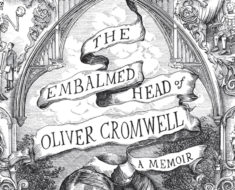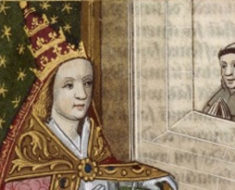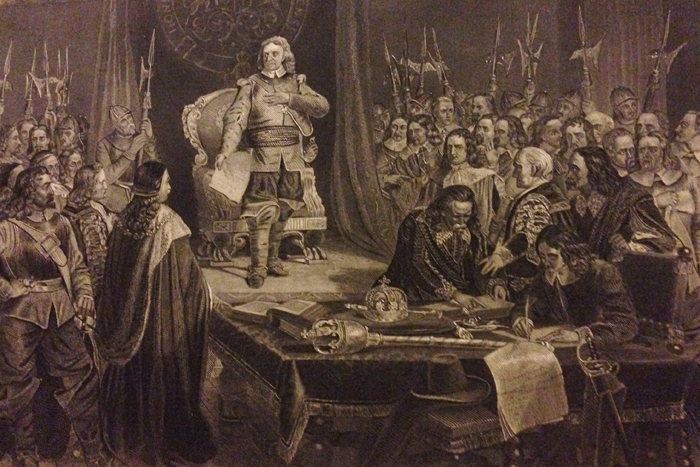
Oliver Cromwell refusing the crown.
In 1658, Dr. George Bate embalmed the deceased body of Oliver Cromwell, the Lord Protector of England, Scotland and Ireland. Little did he know a portion of his handiwork would still be admired for three hundred years after the funeral.
Cromwell, who led the charge in beheading King Charles I in 1649, was buried in Westminster Abbey but exhumed just a few years later, in 1661, when Charles II restored the monarchy. The new king wished to avenge his father’s death by hanging Cromwell and beheading him posthumously.
To deter any potential regicides from following in Cromwell’s Parliamentarian footsteps, the embalmed, severed head was placed on a spike atop Westminster Hall. It remained there for twenty-five years, overlooking London throughout the Great Plague, the Great Fire and the subsequent rebuilding of the city. A heavy storm eventually snapped the head’s wooden stake and Cromwell tumbled to the ground, beginning a journey through England for the next two hundred seventy-five years. Cromwell’s head passed through many hands during this time, including museum owners and entrepreneurial showmen before ultimately finding a home with family named Wilkinson, which bequeathed the artifact through five generations.
Many questioned the head’s authenticity during its travels, and impresarios with impostor heads attempted to capitalize on the embalmed curiosity. Doubt was finally put to rest in the 1930s after a eugenicist, Karl Pearson, and an anthropologist, Geoffrey Morant, declared it genuine in a lengthy and heavily detailed publication. Just a few decades later the head’s final owner, Horace Norman Stanley Wilkinson, decided to rebury the relic at Cromwell’s alma mater, Sidney Sussex College in 1960. It remains there today, interred in an unspecified location within the school’s antechapel.
Read the full story, written from the perspective of Cromwell’s head, in the book, The Embalmed Head of Oliver Cromwell: A Memoir, available at curiouspublications.com or Amazon.
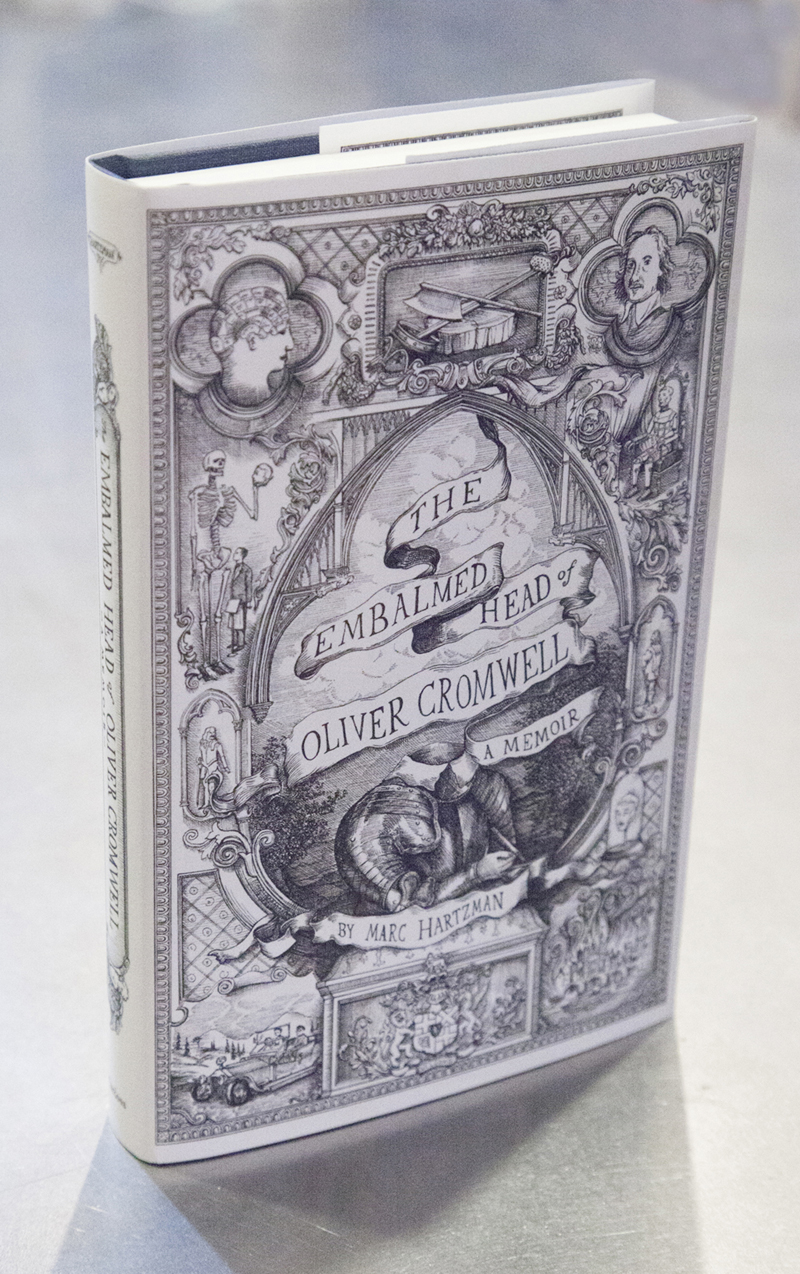
The Embalmed Head of Oliver Cromwell: A Memoir, by Marc Hartzman

